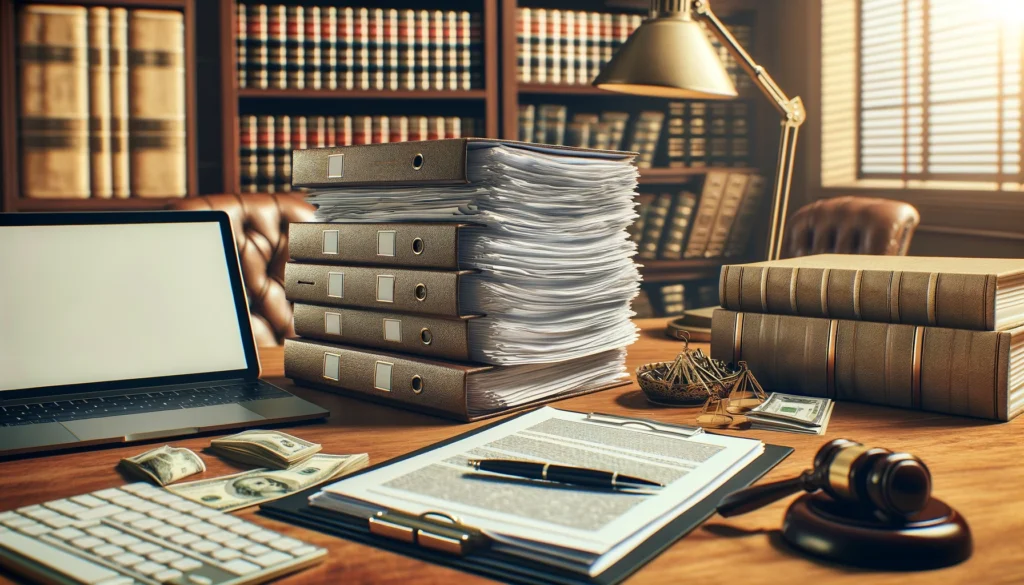
Setting the Stage: The Changing Landscape of Legal Work
In today’s dynamic legal environment, the role of paralegals is expanding beyond traditional boundaries. Increasingly, legal practices are leveraging advanced technologies to streamline operations and enhance productivity. Among these technologies, Artificial Intelligence (AI) and Large Language Models (LLMs) like ChatGPT are becoming indispensable tools, revolutionizing how legal professionals handle case documentation and summaries.
As the AI landscape evolves, ChatGPT stands out for its ability to generate coherent and comprehensive text. This introduction delves into how ChatGPT can transform the preparation of personal injury case summaries, offering unprecedented efficiency and accuracy.
Harnessing AI for Personal Injury Case Summaries: A First Look
Utilizing ChatGPT for crafting personal injury case summaries offers numerous advantages. One of the most significant benefits is the time-saving aspect. Paralegals can now generate detailed summaries quickly, allowing them to allocate more time to other critical tasks. Additionally, AI use minimizes human errors, ensuring consistent and precise documentation.
Personal injury cases encompass a broad spectrum, including automotive accidents, slip-and-fall incidents, medical malpractice claims, and workplace injuries. Each case type varies in complexity and requires tailored summaries to present crucial details succinctly. ChatGPT provides an adaptable solution, capable of generating accurate summaries across these diverse scenarios.
Embracing AI in the legal field does not only streamline processes but also sets a precedent for innovative practice management. The next section explores strategies for formulating the perfect prompt to guide ChatGPT in producing optimal case summaries.
Also read:
Crafting the Perfect Prompt: Guiding ChatGPT for Optimal Output
Generating high-quality case summaries using ChatGPT hinges on the precision of the input prompts. Clear and detailed prompts ensure that the AI understands the context and generates relevant content.
A well-crafted prompt should include:
- Case Type: Specify the nature of the personal injury case.
- Key Facts: Highlight essential details such as dates, events, and parties involved.
- Desired Format: Indicate whether a chronological or thematic summary is required.
- Specific Focus: Mention any particular aspects that need emphasis, such as liability or damages.
Example Prompts:
- “Summarize the following case: A slip-and-fall incident at a grocery store on July 14, 2022, involving Jane Doe. Focus on the store’s liability and any contributory negligence by the plaintiff.”
- “Generate a summary for a medical malpractice case where Dr. Smith allegedly misdiagnosed a condition leading to complications for patient John Doe. Highlight the timeline of events and identify critical errors.”
With accurate prompts, ChatGPT can deliver more nuanced and precise summaries, which we will elaborate on in the next workflow segment.
Also read:
Step-by-Step Workflow: From Raw Data to Polished Summary
To maximize effectiveness in generating case summaries, follow these steps:
1. Gathering Necessary Case Information and Documentation
Start by collecting all pertinent case data. This includes police reports, medical records, witness statements, and any other relevant documentation. Organize the data clearly to facilitate ease of access and input.
2. Structuring Input Data for ChatGPT Effectiveness
Before inputting data into ChatGPT, structure it logically. Create a narrative that includes:
- Incident Description: A brief overview of events.
- Key Actors: Identification of all parties involved.
- Chronological Timeline: Sequence of events leading up to and following the incident.
3. Techniques for Refining and Validating AI-Generated Summaries
After inputting structured data, review the AI-generated summaries. Look for areas that may need additional detail or clarification. Use these techniques to refine and validate:
- Cross-Reference: Compare the AI output with original data to ensure accuracy.
- Edit for Clarity: Simplify complex legal jargon and make sure the summary is comprehensible to all stakeholders.
- Human Oversight: Have a legal professional review the summary to confirm its accuracy and completeness.
By adhering to this workflow, you ensure that the case summary is both comprehensive and reliable, ready for use in any legal context.
Also read:
Advanced Tactics: Nuanced Prompts and Customization
Beyond basic prompts, leveraging more nuanced prompts can yield highly tailored outputs. Context-specific variations allow ChatGPT to adapt to particular legal standards or requirements:
- “Generate a detailed analysis of liability in a slip-and-fall case, focusing on applicable premises liability laws in California.”
- “Provide a chronological summary of a medical malpractice case, emphasizing critical legal errors and their implications.”
By customizing outputs, you align AI-generated summaries with specific case needs, enhancing their utility in legal practice.
Also read:
Efficiency Meets Accuracy: Tips and Tricks
To maximize efficacy, combine these tips with human oversight:
- Draft Iteratively: Use multiple iterations to refine summaries.
- Automate Checks: Implement automated tools for initial error checking.
- Stay Updated: Keep abreast of latest AI features and updates to optimize use.
An efficient, accurate approach not only accelerates summary preparation but also ensures their reliability and comprehensiveness.
Beyond Summaries: Expanding AI Utility in Legal Work
While case summaries are a significant application, AI-tools like ChatGPT have broader utility:
- Contract Analysis
- Legal Research
- Drafting Legal Documents
The potential for AI in legal practice is vast, encouraging continued exploration and adoption of these advanced tools.
Also read:
Concluding Thoughts: Embracing Innovation in Legal Practice
In conclusion, the integration of ChatGPT into personal injury case summary preparation symbolizes the evolving landscape of legal work. By embracing AI, legal professionals can enhance efficiency, accuracy, and productivity. As technology advances, staying updated and exploring new applications will be crucial for maintaining a competitive edge.
By adopting innovative solutions like ChatGPT, the legal field can continue to evolve, offering more dynamic, responsive, and effective legal services to clients.


